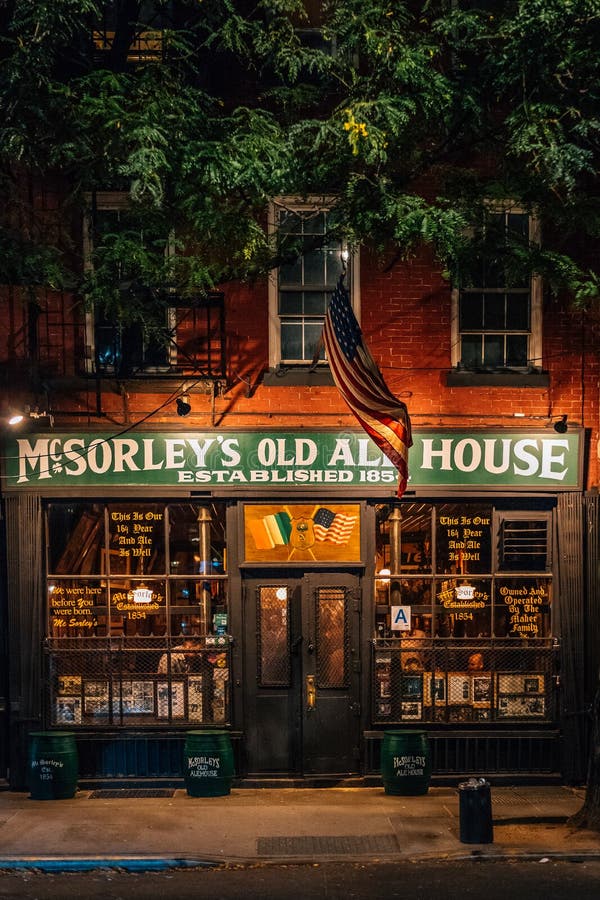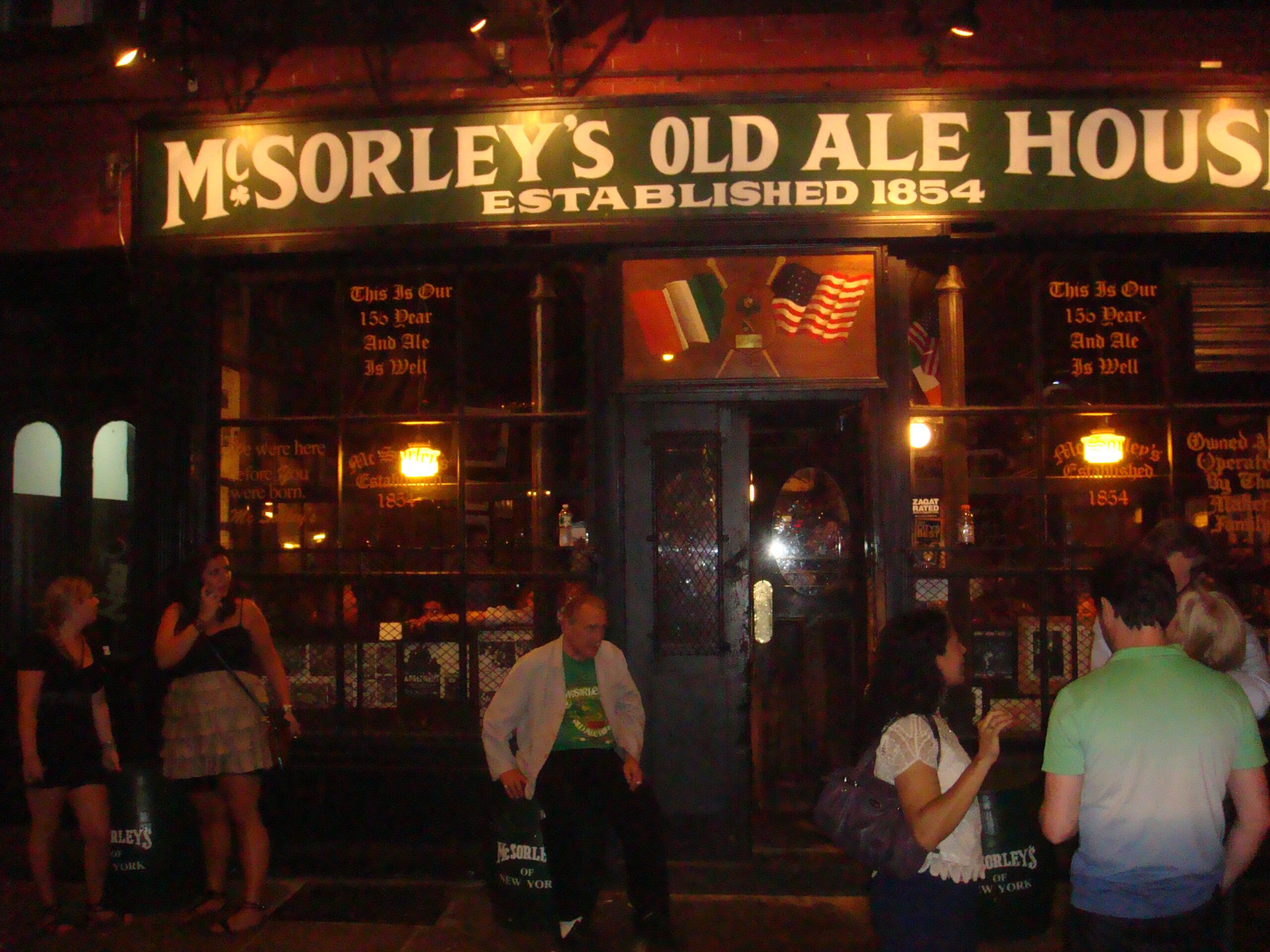Table Of Content

The backbone of the clientele, however, is a rapidly thinning group of crusty old men, predominantly Irish, who have been drinking there since they were youths and now have a proprietary feeling toward the place. Some of these veterans clearly remember John McSorley, the founder, who died in 1910 at the age of eighty-seven. They refer to him as Old John, and they like to sit in rickety armchairs around the big belly stove which heats the place, gnaw on the stems of their pipes, and talk about him.
Notable patrons

It would take another 16 years before McSorley’s would finally install a women’s restroom. Houdini good-spiritedly agreed to the challenge and let the police officer shackle him. Triumphantly, Houdini clanged the handcuffs down on the rail below the bar—locking them into place forever. Harry Houdini, the Hungarian-American escape artist and magician, was a regular at McSorley’s. To this day, a pair of his handcuffs can be seen dangling from the rafters by the front right window.
The Best Irish Pubs In NYC
In 2011, New York City passed a law forbidding bars and restaurants from keeping cats. Minnie was forced out and, five years later, the Department of Health closed McSorley’s for four days while they resolved a rodent problem. McSorley’s has all the hallmarks of a classic tourist attraction, but Buggy says it’s the regulars who really make the place special. Eleven years in, Buggy still refers to himself as “the new guy.” One bartender has been working at McSorley’s for 47 years (and counting), and several customers have been coming in on a regular basis since the 1950s.
McSorley’s Old Ale House: A Crossroad Of NYC Culture And History
No Deliveries, you have to kick it old school and come to the pub for food and drinks. It is no wonder, then, that Old John began to collect Lincoln memorabilia immediately after the death of McSorley’s first celebrity patron. After nearly two centuries of operation, the bar has compiled its own canon of secrets. Now, just in time for St. Patrick’s Day, I’m going to share of few of my favorites with you. Down in the heart of the East Village, tucked around the corner from the imposing Cooper Union, lies McSorley’s Old Ale House, arguably the greatest Irish pub in New York City.
McSorley’s Old Ale House
NYC's 10 oldest bars to travel back in time - Time Out
NYC's 10 oldest bars to travel back in time.
Posted: Tue, 16 Jan 2024 08:00:00 GMT [source]
Bill McSorley was the kind of person who minds his own business vigorously. He inherited every bit of his father’s surliness and not much of his affability. The father was by no means a lush, but the son carried temperance to an extreme; he drank nothing but tap water and tea, and bragged about it. He was so solemn that before he was thirty several customers had settled into the habit of calling him Old Bill. He worshipped his father, but no one was aware of the profundity of his worship until Old John died.
History on the walls – memorabilia at McSorley’s
Former presidents Ulysses S. Grant, Theodore Roosevelt, and the aforementioned Lincoln would visit the pub when in New York. Perhaps the most touching piece of history in McSorley’s, however, are the wishbones hanging from a light above the bar. Barbara Shaum, became the first female patron to be admitted to the establishment in 1970.
History
It rode the fervor of Abraham Lincoln’s historic Cooper Union Address delivered in New York City. They served the 16th president their signature brew, only to later lament the fateful news of his assassination in April of 1865. Strangely, Lincoln shares this similarity to JFK, who was also rumored to have tasted McSorley’s toasted lager.
NYC's best Irish pubs pour perfect pints of Guinness - Time Out
NYC's best Irish pubs pour perfect pints of Guinness.
Posted: Fri, 09 Feb 2024 08:00:00 GMT [source]
craft beer, pub fare.
(His daughter, Teresa Maher de la Haba is the current owner.) He felt that he could not entrust the task to anybody else. One by one, he took down each wishbone, dusted it, and carefully returned it to its rightful place on the lamp rail. Doyle earned a "Best of Philly" award in 2010 when he was named the city's best bartender, and his wife, Laura Doyle, said all these years later she doesn't mind sharing him with the rest of the city.
After the funeral, Bill locked the saloon, went upstairs to the family flat, pulled the shutters to, and did not come out for almost a week. Subsequently he commissioned a Cooper Union art teacher to make a small painting of Old John from a photograph. Bill placed it on the wall back of the bar and thereafter kept a hooded electric light burning above it, a pious custom that is still observed.
He learned later that a customer who had fought in the Civil War had brought them back from a Confederate prison in Andersonville, Georgia, and had given them to Old John as a souvenir. Bill would sometimes take an inexplicable liking to a customer. Around 1911 a number of painters began hanging out in McSorley’s.
The only time McSorley’s altered its serving practices was during Prohibition in the United States. During this period, the bar served a ‘near beer’, with too low an alcohol content to be outlawed. This little pub is really unique in the East Village New York.
It’s been home to presidents and poets, scallywags and scribes—and just about everyone in between. E. Cummings described McSorley's as "the ale which never lets you grow old".[30] He also described the bar as "snug and evil".[30][35] McSorley's was the focus of several articles by New Yorker author Joseph Mitchell. One collection of his stories was entitled McSorley's Wonderful Saloon (1943). According to Mitchell, the Ashcan school painters John Sloan, George Luks and Stuart Davis were all regulars.
While playing stickball, they keep great packing-box fires going in the gutter; sometimes they roast mickies in the gutter fires. Drunks reel over from the Bowery and go to sleep in doorways, and the kids give them hotfoots with kitchen matches. In McSorley’s the free-lunch platters are kept at the end of the bar nearer the street door, and several times every afternoon kids sidle in, snatch handfuls of cheese and slices of onion, and dash out, slamming the door. Although by no means a handshaker, Old John knew many prominent men. One of his closest friends was Peter Cooper, president of the North American Telegraph Company and founder of Cooper Union, which is a half-block west of the saloon. Mr. Cooper, in his declining years, spent so many afternoons in the back room philosophizing with the workingmen that he was given a chair of his own; it was equipped with an inflated rubber cushion.
He bought a fire-alarm gong similar to those used in schools and factories and screwed it to the seven-foot-tall icebox behind the bar. If someone started a song, or if the old men sitting around the stove began to yell at each other, he would shuffle over to the gong and give the rope a series of savage jerks. The gong is there yet and is customarily sounded at a quarter to midnight as a warning that closing time is imminent; the customers grab their ears when it goes off. Bill was consistent in his aversion to noise; he didn’t even like the sound of his own voice.

No comments:
Post a Comment